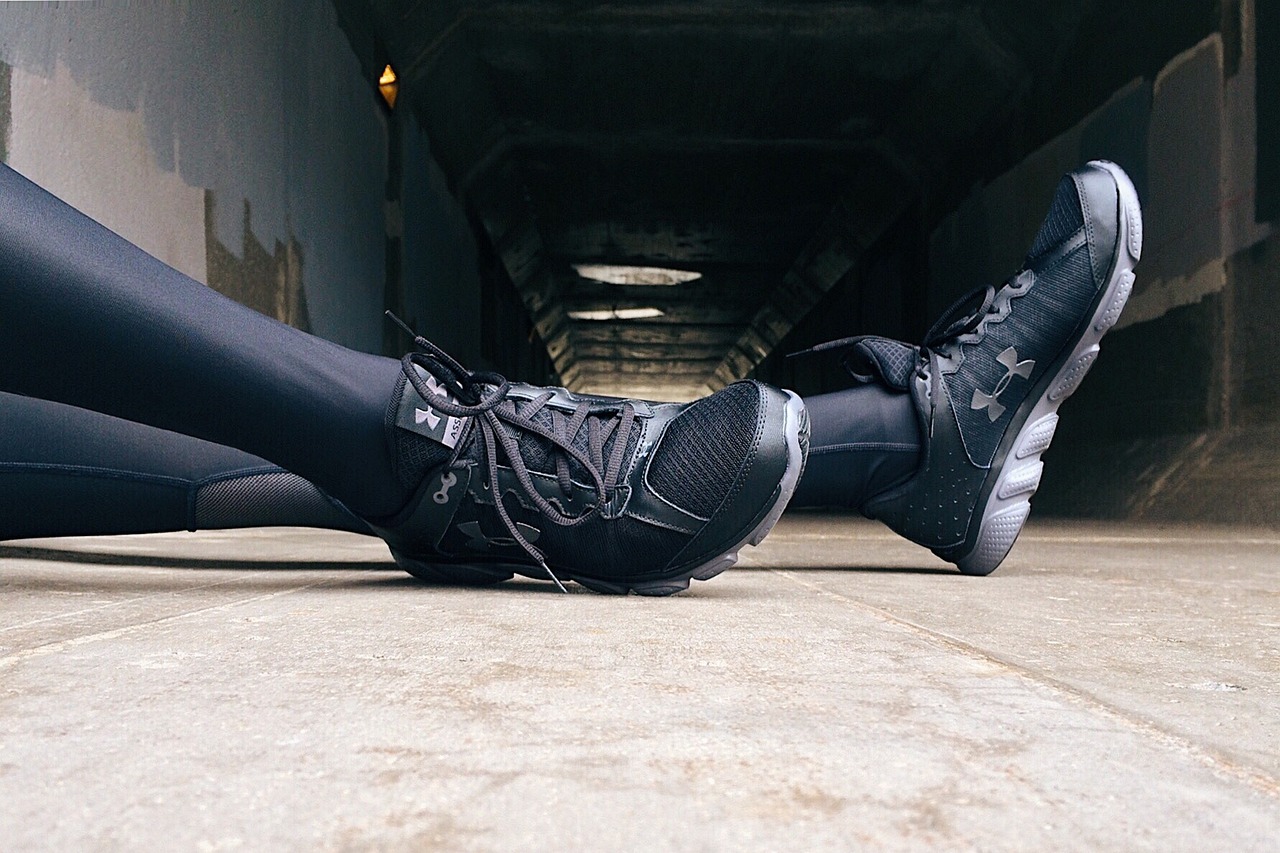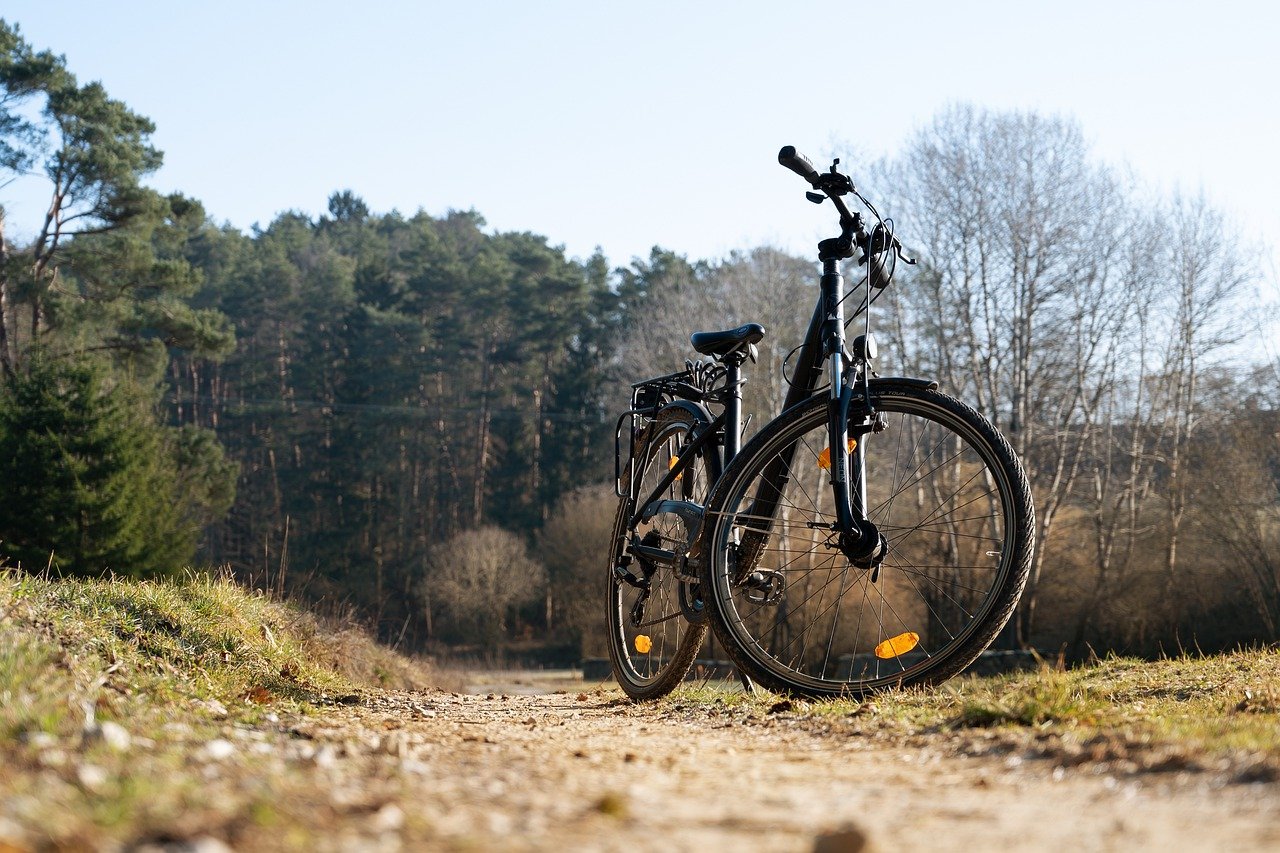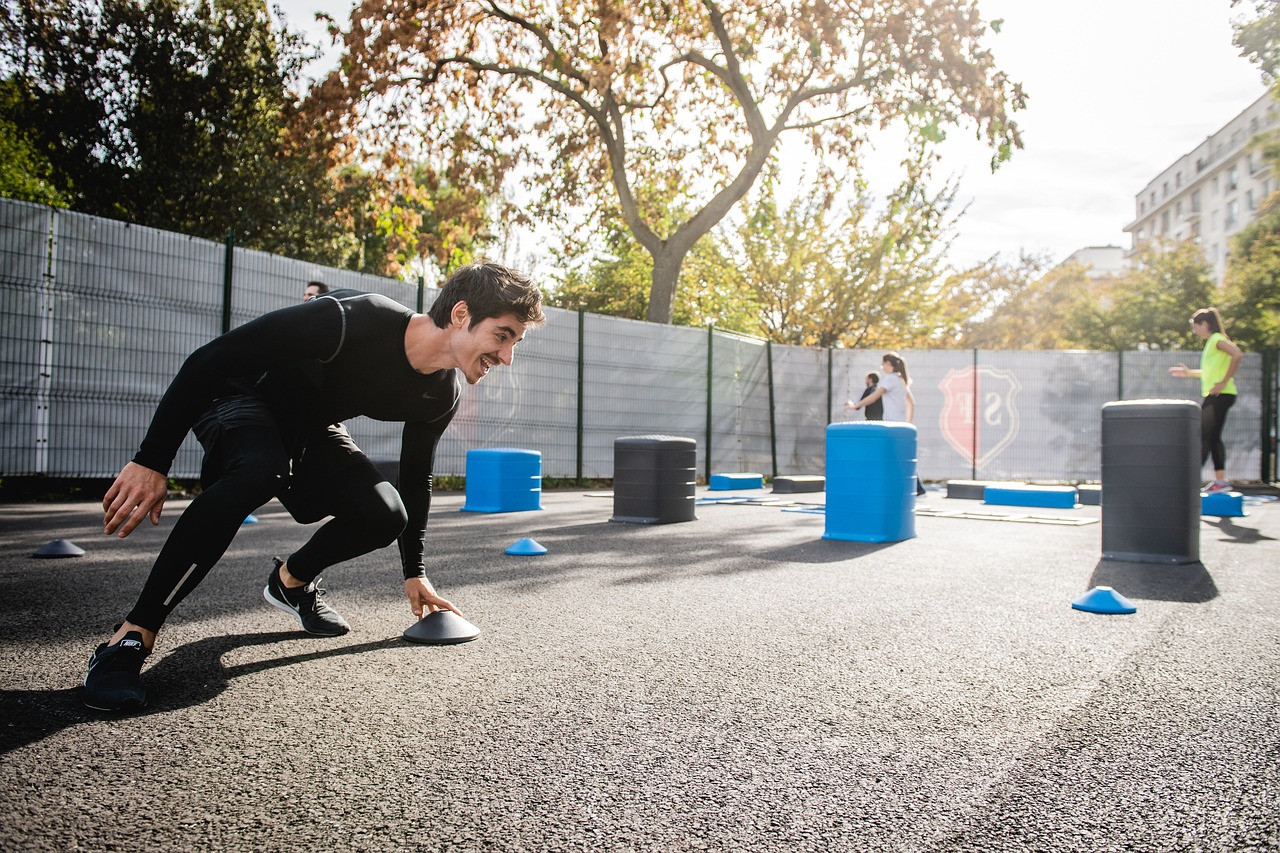How to Make Your Fitness Routine More Eco-friendly
In today’s world, where climate change and environmental issues are at the forefront of our minds, it’s essential to consider how our personal choices impact the planet. When it comes to fitness, many people think about their health, but what if we could also think about the health of our environment? This article explores various strategies to incorporate sustainability into your fitness regimen, highlighting eco-friendly practices, equipment, and lifestyle choices that benefit both your health and the planet. By making simple changes, you can transform your workout routine into an eco-conscious journey that not only strengthens your body but also contributes to a healthier Earth.
Investing in eco-friendly fitness apparel and equipment can significantly reduce your environmental impact. Many brands now prioritize sustainability by using materials like organic cotton, recycled polyester, and even bamboo. These materials not only perform well during workouts but also lessen the carbon footprint associated with traditional manufacturing processes. When shopping for workout gear, look for certifications such as Global Organic Textile Standard (GOTS) or OEKO-TEX, which guarantee that the products meet high environmental and safety standards.
Additionally, consider supporting brands that practice ethical labor and fair trade. By choosing sustainable brands, you’re not just purchasing a product; you’re endorsing a philosophy that values both people and the planet. Think about it: each time you wear your eco-friendly leggings or use a biodegradable yoga mat, you’re making a statement about what matters to you.
Selecting workout venues that prioritize sustainability can enhance your fitness experience. Whether it’s a local park, a beach, or an eco-friendly gym, the place where you exercise can have a significant impact on your overall workout. Parks and outdoor spaces not only provide a beautiful backdrop for your routine but also allow you to connect with nature. Imagine doing your morning run surrounded by trees, or practicing yoga on a grassy knoll with the sun shining down. These experiences can be refreshing and invigorating.
Exercising outdoors not only benefits your health but also connects you with nature. Activities like hiking, cycling, and yoga in natural settings foster environmental appreciation. When you’re out in nature, you’re more likely to notice the beauty around you, which can enhance your mental well-being. Plus, you’re reducing the energy consumption associated with indoor gyms. Nature becomes your gym, and it’s free!
Engaging in workouts surrounded by nature can improve mental well-being and motivation. Studies show that spending time outdoors can reduce stress, anxiety, and depression while boosting your mood. The fresh air and natural light can invigorate your workouts, making you feel more energized and motivated. It’s like a natural boost of serotonin! So, next time you’re planning your workout, consider heading outdoors—your mind and body will thank you.
Participating in fitness activities that involve community service, like beach clean-ups or park restoration, fosters teamwork and environmental stewardship. Imagine getting a workout while picking up trash at your local beach or planting trees in a community park. Not only are you burning calories, but you’re also making a tangible difference in your community. Combining fitness with community efforts can be incredibly rewarding, creating a sense of accomplishment and camaraderie among participants.
Nutrition plays a crucial role in fitness, and choosing locally sourced, organic foods can support your health while minimizing carbon footprints. By selecting seasonal produce from local farmers' markets, you not only get fresher ingredients but also reduce the environmental impact associated with transporting food over long distances. Plus, eating organic means you're avoiding harmful pesticides and supporting sustainable agricultural practices.
Minimizing waste is essential for an eco-friendly fitness routine. Discover strategies to reduce plastic use, recycle workout gear, and maintain a sustainable approach to nutrition and hydration. One simple way to cut down on waste is by opting for reusable items. Instead of single-use plastic water bottles, invest in a quality reusable water bottle. Not only does it save money in the long run, but it also helps keep our oceans and landfills cleaner.
Using reusable water bottles, bags, and containers can significantly cut down on single-use plastics. Consider carrying a stylish, insulated water bottle to keep your drinks cold or hot during workouts. This small change can have a big impact, and it’s a step toward a more sustainable lifestyle. Plus, it’s a great conversation starter at the gym!
Learn how to recycle or upcycle old workout gear, turning it into something new and useful. Instead of tossing your old yoga mat or running shoes, consider donating them to local charities or repurposing them into garden mats or pet beds. Discovering creative ways to give your equipment a second life not only reduces waste but also inspires others to think sustainably. It’s all about making conscious choices that reflect your values.
- How can I start making my fitness routine more eco-friendly? Begin by choosing sustainable workout gear and opting for outdoor workouts whenever possible.
- What are some eco-friendly brands for workout gear? Look for brands that use organic materials and have ethical manufacturing practices.
- Can outdoor workouts really improve my mental health? Yes! Nature-based exercise has been shown to reduce stress and enhance mood.
- How can I reduce waste while working out? Use reusable water bottles and bags, and recycle or upcycle old fitness equipment.

Choosing Sustainable Workout Gear
When it comes to your fitness journey, the gear you choose can make a significant difference—not just for your performance, but also for the planet. Imagine striding into your next workout, not only feeling good about your physical capabilities but also knowing that your choices are contributing to a healthier Earth. Investing in eco-friendly fitness apparel and equipment is a fantastic way to reduce your environmental impact while still maintaining high performance. So, what should you look for?
First off, consider the materials used in your workout gear. Many brands are now prioritizing sustainable fabrics like organic cotton, recycled polyester, and bamboo. These materials not only feel great against your skin but also help minimize the carbon footprint associated with traditional manufacturing processes. For instance, recycled polyester is made from plastic bottles, giving a second life to materials that would otherwise end up in landfills. It's like turning trash into treasure—who wouldn't want to wear something that embodies that ethos?
Next, it’s essential to research the brands you support. Look for companies that are transparent about their production processes and environmental policies. Many brands now boast certifications, such as Global Organic Textile Standard (GOTS) or OEKO-TEX, which ensure that their products meet strict environmental and social criteria. By choosing brands with these certifications, you're not just buying a product; you're investing in a movement toward sustainability.
Additionally, consider the longevity of your gear. Instead of constantly purchasing new items, opt for high-quality pieces that are designed to last. This not only saves you money in the long run but also reduces waste. Think of it this way: if you buy a durable pair of shoes that lasts for years, you’re avoiding the cycle of fast fashion that contributes to environmental degradation. It’s all about making mindful choices that benefit both you and the planet.
Here’s a quick comparison table to help you understand the differences between conventional and sustainable workout gear:
| Aspect | Conventional Gear | Sustainable Gear |
|---|---|---|
| Material | Non-recyclable synthetic fabrics | Organic cotton, recycled polyester, bamboo |
| Production | High carbon footprint, often unethical labor | Eco-friendly processes, fair labor practices |
| Longevity | Often low durability, leading to frequent replacements | Designed for durability, reducing waste |
In conclusion, choosing sustainable workout gear is not just about the clothes you wear or the equipment you use; it's about making a statement. Every time you opt for eco-friendly options, you're sending a message that you care about the planet. So, the next time you're shopping for workout gear, remember that your choices can inspire others. Together, we can create a fitness culture that champions sustainability and health. Ready to make the switch?
Q: What are some popular sustainable workout brands?
A: Some well-known sustainable brands include Patagonia, prAna, and Allbirds. They focus on eco-friendly materials and ethical production practices.
Q: How can I tell if a product is truly sustainable?
A: Look for certifications like GOTS or OEKO-TEX, and research the company’s environmental policies. Transparency is key!
Q: Is sustainable gear more expensive?
A: While some sustainable options may have a higher upfront cost, they often offer better durability and longevity, which can save you money over time.

Eco-conscious Workout Locations
When it comes to staying fit, why not do it in a way that also nurtures our planet? Choosing eco-conscious workout locations can transform your fitness routine into a more sustainable practice. Think about it: instead of hitting a conventional gym with all its energy consumption and plastic waste, you could be sweating it out in a beautiful park or a green gym that prioritizes environmental responsibility. Not only does this choice benefit the Earth, but it also enhances your workout experience by connecting you with nature.
Imagine doing your morning yoga session surrounded by towering trees, or going for a run along a scenic trail that offers breathtaking views. These locations not only provide a refreshing backdrop but also promote a sense of community and well-being. Many parks and outdoor spaces have been designed with sustainability in mind, featuring eco-friendly facilities and materials. For instance, you might find:
- Solar-powered lights illuminating pathways, reducing energy consumption.
- Recycled materials used in benches and workout stations.
- Native landscaping that requires less water and supports local wildlife.
Moreover, eco-friendly gyms are popping up all over the place! These establishments often utilize energy-efficient equipment and sustainable practices. For example, some gyms harness the energy generated from your workouts to power their facilities. Isn't that a cool way to literally power your fitness journey? It’s like being part of a fitness revolution that not only strengthens your body but also contributes to a greener planet.
In addition to parks and green gyms, consider participating in community fitness events held in natural settings. Many cities organize outdoor boot camps, group runs, or cycling events that take advantage of local trails and parks. These events not only promote physical health but also foster a sense of camaraderie among participants, making your workouts even more enjoyable. Plus, you’re contributing to the preservation of these beautiful spaces!
So, the next time you're planning your workout, think about where you can go that aligns with your eco-conscious values. Whether it’s a local park, an outdoor yoga class, or a green gym, your choices can make a significant impact. By opting for eco-friendly workout locations, you’re not just enhancing your fitness journey; you’re also becoming a steward of the environment. Now that’s a win-win!
Q: What are eco-friendly gyms?
A: Eco-friendly gyms are fitness centers that implement sustainable practices, such as using energy-efficient equipment, reducing waste, and utilizing renewable energy sources.
Q: How can I find outdoor workout locations in my area?
A: You can search for local parks, nature trails, and community fitness events online or through fitness apps that highlight outdoor activities.
Q: Are there any specific outdoor activities that are more eco-friendly?
A: Activities like hiking, cycling, and yoga in parks or nature reserves are generally more eco-friendly as they promote a connection to nature and often have a lower environmental impact compared to indoor workouts.

Outdoor Workouts and Nature Integration
When it comes to fitness, why confine yourself to four walls when the great outdoors is calling? Outdoor workouts not only offer a refreshing change of scenery but also provide a unique opportunity to integrate nature into your fitness routine. Picture this: the sun warming your skin, the sound of leaves rustling in the breeze, and the invigorating smell of fresh air filling your lungs. Doesn’t that sound more appealing than the stale air of a gym?
Exercising outdoors can take many forms. Whether you're hiking through lush trails, cycling along scenic routes, or practicing yoga in a tranquil park, each activity allows you to connect with the environment in a way that indoor workouts simply can't replicate. For instance, hiking not only challenges your body but also invites you to appreciate the beauty of nature. It's like a two-for-one deal: you get your heart pumping while soaking in breathtaking views. Plus, the varied terrain of trails can enhance your balance and strength, making your workout more dynamic.
Moreover, outdoor workouts can significantly boost your mood and motivation. Studies have shown that exercising in natural settings can lead to lower levels of stress and anxiety. Just think about it: when you're surrounded by greenery and the sounds of nature, your worries seem to fade away, allowing you to focus on your fitness goals. Nature has a way of rejuvenating our spirits, making it easier to push through that last mile or hold that challenging yoga pose.
Here are some fantastic ways to incorporate nature into your fitness routine:
- Trail Running: Hit the trails for a run that engages your muscles in different ways compared to a treadmill.
- Cycling: Explore your local parks or bike paths while enjoying the fresh air.
- Outdoor Yoga: Find a serene spot in a park to stretch and meditate amidst the beauty of nature.
- Group Classes: Join outdoor fitness classes that combine exercise with the joy of being outside.
Incorporating outdoor workouts into your regimen not only enhances your physical health but also fosters a deeper appreciation for the environment. Imagine the joy of discovering hidden gems in your community—beautiful parks, serene lakes, and vibrant trails—all while getting fit. It's a win-win! You get to enjoy the beauty of the world around you while also contributing to your personal health.
So, the next time you're planning your workout, consider taking it outside. Embrace the elements, breathe in the fresh air, and let nature be your gym. You'll not only feel better physically but also mentally and emotionally. And who knows? You might just find that your best workouts happen under the open sky.
Q: What are some benefits of exercising outdoors?
A: Exercising outdoors can reduce stress, improve mood, and enhance overall well-being. The fresh air and natural surroundings can motivate you to work harder and enjoy your workouts more.
Q: Can I do any type of workout outside?
A: Absolutely! You can run, cycle, do yoga, or even strength training. Just find a suitable space that allows for your preferred activities.
Q: How can I stay safe while working out outdoors?
A: Always be aware of your surroundings, stay hydrated, wear appropriate gear, and consider the weather. It's also wise to let someone know your plans if you're venturing into less populated areas.

Benefits of Nature-Based Exercise
When it comes to fitness, have you ever considered the profound impact that nature can have on your workout routine? Engaging in exercise outdoors, surrounded by the beauty of nature, offers a plethora of benefits that go beyond just physical fitness. Imagine the fresh air filling your lungs as you hike up a scenic trail or the gentle rustle of leaves accompanying your yoga practice in the park. These experiences not only enhance your workout but also uplift your spirit. Here are some compelling reasons to embrace nature-based exercise:
- Improved Mental Health: Studies have shown that spending time in nature can significantly reduce stress levels and anxiety. The tranquility of natural surroundings fosters a sense of peace and calm.
- Enhanced Mood: Exercising outdoors can boost your mood thanks to the release of endorphins, often referred to as the "feel-good" hormones. The combination of physical activity and the beauty of nature creates a powerful mood enhancer.
- Increased Motivation: Let’s face it, the gym can sometimes feel monotonous. Nature provides a dynamic backdrop that can reignite your passion for fitness. The changing scenery and fresh air can make your workouts feel less like a chore and more like an adventure.
- Boosted Creativity: Ever feel stuck in a creative rut? Nature has a way of sparking creativity. Engaging in outdoor activities can help clear your mind, allowing new ideas to flow freely.
- Connection to the Environment: Exercising in nature helps you develop a deeper appreciation for the environment. It fosters a sense of responsibility to protect our planet, which is crucial in today’s world.
Moreover, nature-based exercise often encourages social interactions. Whether you’re joining a hiking group, participating in an outdoor yoga class, or simply working out with a friend at the park, these activities can strengthen relationships and build community. The shared experience of enjoying nature while exercising creates bonds that gym workouts often lack.
Additionally, nature's unpredictability can enhance your physical fitness. Navigating uneven terrain while hiking or running on a beach can challenge your body in ways that a treadmill simply cannot. This not only improves your strength and balance but also keeps your workouts exciting and engaging.
So, next time you’re considering where to get your sweat on, think outside the gym! Embrace the great outdoors and experience the myriad of benefits that nature-based exercise has to offer. In doing so, you won’t just be working on your fitness; you’ll be nurturing your mind, body, and spirit, all while fostering a deeper connection to our planet.
1. What are some examples of nature-based exercises?
You can engage in various activities such as hiking, cycling, running on trails, outdoor yoga, or even swimming in natural bodies of water. The options are endless!
2. How does exercising in nature differ from working out indoors?
Nature provides a change of scenery, fresh air, and often, a more varied terrain, which can challenge your body differently than a gym setting. The mental benefits, such as reduced stress and increased motivation, are also significant.
3. Can I combine community service with my fitness routine?
Absolutely! Participating in community clean-up events or volunteering for park restoration can be a great way to stay fit while contributing positively to your environment.

Community Clean-Up Workouts
Imagine this: you’re out in the fresh air, sweating it out while also making a positive impact on your community. blend fitness with philanthropy, creating a win-win scenario for both your body and the environment. These activities allow you to engage with your surroundings while promoting teamwork and environmental stewardship. Not only do you get a great workout, but you also contribute to the beautification of your local parks, beaches, and neighborhoods.
Participating in clean-up workouts can be as simple as gathering a group of friends for a jog around your local park while picking up litter along the way. Or you might join a larger organized event where you can meet like-minded individuals who share your passion for fitness and the environment. The camaraderie developed during these events can be incredibly rewarding, fostering a sense of community spirit that transcends the workout itself.
Here’s a quick breakdown of what you can typically expect from a community clean-up workout:
| Activity | Description | Benefits |
|---|---|---|
| Jogging & Litter Picking | Run through local parks while collecting trash. | Cardio workout + environmental contribution. |
| Beach Clean-Up | Walk along the shore collecting debris. | Strengthens core + protects marine life. |
| Community Gardening | Dig, plant, and maintain local green spaces. | Full-body workout + beautifies the area. |
By participating in these types of workouts, you not only enhance your physical fitness but also create a ripple effect of positivity. Each piece of trash you pick up or each weed you pull contributes to a cleaner, healthier environment. Plus, the endorphin rush from exercising in a group setting can elevate your mood and motivate you to continue these eco-friendly practices. It’s like hitting two birds with one stone—getting fit while giving back!
So, why not check out local fitness groups or community boards to find upcoming clean-up events? You might be surprised by how many people are eager to join in. And who knows, you might even make a few new friends along the way!
Q: What should I wear for a community clean-up workout?
A: Wear comfortable workout clothes and sturdy shoes. Since you may be handling trash, gloves are also recommended!
Q: Can I bring my kids to clean-up events?
A: Absolutely! Many community clean-up workouts are family-friendly and can be a great way to teach kids about environmental responsibility.
Q: Are these workouts organized by local groups?
A: Yes, many community organizations, fitness groups, and environmental clubs organize these events. Check social media or local community boards for announcements.

Eco-friendly Nutrition for Fitness
When it comes to fitness, we often focus on our workouts and the gear we use, but what about the fuel we put into our bodies? Nutrition plays a crucial role in our overall health and performance, and making eco-friendly choices can significantly impact both our well-being and the planet. Imagine this: every bite you take can either contribute to a healthier Earth or add to its woes. So, how can we ensure our nutrition aligns with our fitness goals while being kind to the environment?
First off, consider the power of locally sourced foods. By choosing fruits, vegetables, and proteins that are grown or raised nearby, you not only support local farmers but also reduce the carbon footprint associated with transporting food over long distances. It's like a double win! You get fresh, nutrient-dense food while helping to keep your community thriving. Plus, seasonal produce often tastes better, as it's picked at its peak ripeness.
Next, let’s talk about organic foods. Organic farming practices are designed to enhance biodiversity and soil health, which is essential for sustainable agriculture. By opting for organic fruits, vegetables, and grains, you’re supporting farming methods that avoid synthetic pesticides and fertilizers. This not only benefits your health but also reduces chemical runoff that can harm local ecosystems. Think of it as a way to nourish your body while caring for the planet.
Another key aspect of eco-friendly nutrition is minimizing food waste. Did you know that around one-third of all food produced globally is wasted? That's a staggering statistic! To combat this, try planning your meals ahead of time and using leftovers creatively. For instance, if you have leftover roasted vegetables, toss them into a salad or blend them into a soup. Not only does this reduce waste, but it also adds variety to your meals. Remember, every little effort counts!
Lastly, consider the impact of plant-based diets. Incorporating more plant-based meals into your routine can significantly reduce your carbon footprint. Meat and dairy production are resource-intensive and contribute to greenhouse gas emissions. By swapping just a few meals a week with plant-based options, you can make a substantial difference. Think of it as giving your body a break while also giving the planet a helping hand. Not to mention, plant-based foods are often packed with essential nutrients that support your fitness journey.
In summary, making eco-friendly choices in your nutrition doesn’t have to be complicated. By focusing on locally sourced, organic foods, minimizing waste, and embracing plant-based options, you can nourish your body while also nurturing the Earth. So, next time you sit down for a meal, ask yourself: how can I make this choice better for both me and the planet?
- What are some easy plant-based meal ideas? Start with simple dishes like veggie stir-fries, lentil soups, or quinoa salads. These meals are not only delicious but also easy to prepare.
- How can I find local farmers' markets? Check online directories or community boards to find farmers' markets near you. Many cities also have apps that show local produce availability.
- Is organic food really worth the price? While organic food can be more expensive, many believe the health benefits and environmental impact make it a worthwhile investment.

Reducing Waste in Your Fitness Routine
In today's world, where environmental concerns are at the forefront of public consciousness, reducing waste in your fitness routine is not just a trend; it's a responsibility. Many of us might not realize how our workout habits can contribute to waste generation. From single-use plastics to discarded workout gear, the fitness industry can leave a significant mark on the planet. But fear not! With a few mindful adjustments, you can transform your fitness routine into a more sustainable practice that benefits both your health and the environment.
One of the first steps you can take is to minimize the use of single-use plastics. For instance, consider swapping out those disposable plastic water bottles for a reusable water bottle. Not only does this cut down on plastic waste, but it also keeps your drinks at the perfect temperature. Plus, many reusable bottles come with features like built-in filters or insulation, making them both practical and eco-friendly. By making this simple change, you can save hundreds of plastic bottles from ending up in landfills each year.
Next, think about the gear you use for your workouts. Many people invest in various fitness equipment, but what happens when they no longer need it? Instead of tossing it in the trash, consider recycling or upcycling your old workout gear. For example, you can turn an old yoga mat into a pet bed or use worn-out clothes as cleaning rags. Not only does this extend the life of your items, but it also promotes a culture of sustainability. If you're unsure where to start, there are numerous online platforms and local community groups dedicated to recycling or donating fitness equipment.
Another effective strategy is to embrace eco-conscious nutrition. This means choosing locally sourced, organic foods that not only fuel your body but also reduce your carbon footprint. By supporting local farmers and sustainable agriculture, you're not just eating better; you're also contributing to a healthier planet. Think of it as a delicious way to show your love for Mother Earth!
To help you visualize the impact of these changes, consider the following table that outlines how simple actions can lead to significant waste reduction:
| Action | Waste Reduction |
|---|---|
| Using a reusable water bottle | Eliminates approximately 167 plastic bottles per person per year |
| Recycling old workout gear | Prevents waste and promotes resource recovery |
| Choosing organic, local foods | Supports sustainable practices and reduces transportation emissions |
In addition to these practical changes, consider adopting a mindful approach to your fitness routine. Reflect on your habits and ask yourself: Are there areas where I can reduce waste? Can I incorporate more sustainable practices into my daily workouts? By questioning your routine, you open the door to innovative solutions that can enhance your fitness experience while being kind to the planet.
Lastly, don’t underestimate the power of community. Join local fitness groups that focus on sustainability. Participating in community clean-up workouts not only helps the environment but also builds camaraderie among like-minded individuals. Imagine the satisfaction of getting fit while also making your community a cleaner, greener place!
Q: How can I reduce waste without sacrificing my workout performance?
A: You can easily reduce waste by using reusable items, choosing sustainable gear, and being mindful of your nutrition without compromising your workout performance. Many eco-friendly products are designed to perform just as well as their conventional counterparts.
Q: What are some eco-friendly brands I can support?
A: Look for brands that prioritize sustainability in their manufacturing processes, such as those using recycled materials or organic fabrics. Brands like Patagonia, prAna, and Allbirds are known for their commitment to the environment.
Q: How do I get involved in community clean-up workouts?
A: Check local community boards, social media groups, or fitness centers for organized clean-up events. Many organizations host regular activities that combine fitness with environmental stewardship.

Reusable Water Bottles and Gear
In today's world, where environmental concerns are at an all-time high, making conscious choices about our fitness routines can lead to significant positive changes. One of the simplest yet most impactful ways to contribute to sustainability is by opting for . Imagine heading to the gym or going for a run, and instead of grabbing a single-use plastic bottle, you whip out your stylish, durable, and eco-friendly water bottle. Not only does it keep your drink cold or hot, but it also helps reduce the staggering amount of plastic waste that ends up in our oceans and landfills.
Reusable water bottles come in various materials, including stainless steel, glass, and BPA-free plastics. Each option has its perks. For instance, stainless steel bottles are insulated, keeping your drinks at the desired temperature for hours, while glass bottles offer a clean taste and are easy to clean. The choice ultimately depends on your personal preferences and lifestyle. However, the key takeaway is that by making the switch, you are actively participating in a larger movement towards reducing plastic waste.
Moreover, using reusable gear extends beyond just water bottles. Think about your gym bag, yoga mat, or even your workout clothes. Investing in high-quality, sustainable gear made from recycled or organic materials can drastically lower your carbon footprint. For example, many brands now offer eco-friendly yoga mats made from natural rubber or jute, which are not only better for the planet but also provide excellent grip and durability. By choosing such products, you are not just enhancing your performance, but also supporting businesses that prioritize sustainability.
Incorporating reusable and sustainable items into your fitness routine is not just a trend; it's a lifestyle choice that benefits both you and the environment. Every time you reach for your reusable gear, you’re sending a message that you care about the planet and are willing to make small changes for a greater impact. So next time you’re gearing up for a workout, take a moment to consider how you can make your routine more eco-friendly. After all, it’s not just about being fit; it’s about being fit for the planet too!
- What are the benefits of using reusable water bottles? Reusable water bottles help reduce plastic waste, save money in the long run, and often keep drinks at the desired temperature.
- How do I clean my reusable water bottle? Most reusable bottles can be cleaned with warm soapy water. Some are also dishwasher safe, but always check the manufacturer's instructions.
- Are there eco-friendly options for workout gear? Yes! Many brands offer workout clothing and accessories made from recycled materials or organic fabrics.

Recycling and Upcycling Fitness Equipment
In a world where sustainability is becoming increasingly important, is a fantastic way to minimize waste while still enjoying your workout routine. Instead of tossing out old gear, why not consider how you can breathe new life into it? This not only helps the environment but also allows you to get a bit creative! For instance, old yoga mats can be transformed into durable coasters or even used as cushioning for your pet's bed. The possibilities are endless!
Moreover, many fitness enthusiasts are unaware of the options available for recycling their equipment. Many local gyms and community centers have programs in place to collect used gear, which can then be refurbished or donated to those in need. This not only reduces landfill waste but also supports individuals who may not have the means to purchase new equipment. It’s a win-win situation! Imagine contributing to your community while also making a positive impact on the planet.
Here are a few ideas on how you can upcycle your fitness equipment:
- Old T-Shirts: Turn them into workout headbands or wash cloths.
- Weights: Use them as decorative garden stones or doorstops.
- Resistance Bands: Cut them to create durable elastic bands for various DIY projects.
Additionally, if you're looking to recycle rather than upcycle, consider checking out local recycling centers that accept fitness gear. Some brands even have take-back programs where they will recycle their products responsibly. This not only helps you declutter your space but also ensures that your old equipment is disposed of in an eco-friendly manner.
Ultimately, by embracing the practices of recycling and upcycling, you contribute to a more sustainable fitness culture. Not only does this approach reduce your carbon footprint, but it also fosters a sense of community and creativity. So, the next time you find yourself with old workout gear, take a moment to think about how you can repurpose it. You might just find that your creativity leads to a fun new project!
Q: What types of fitness equipment can be upcycled?
A: Almost any fitness equipment can be upcycled! Common items include old mats, weights, resistance bands, and even clothing. Get creative and think outside the box!
Q: Where can I recycle my old fitness equipment?
A: Many local gyms, community centers, and recycling facilities accept fitness equipment. Check with your local organizations or look for brands that offer take-back programs.
Q: How can I find DIY upcycling ideas for my fitness gear?
A: There are countless resources online, including blogs, YouTube channels, and Pinterest boards dedicated to DIY projects. Just search for "upcycling fitness equipment" to get started!
Frequently Asked Questions
- What are some eco-friendly materials for workout gear?
When looking for sustainable workout gear, consider materials like organic cotton, recycled polyester, and bamboo. These fabrics are not only better for the environment but also provide excellent comfort and performance during your workouts.
- How can I find eco-conscious workout locations?
To discover eco-friendly workout venues, look for gyms that focus on sustainability, parks that promote outdoor activities, or community centers that host green fitness classes. Websites and apps dedicated to eco-friendly living can also help you find local options.
- What are the benefits of exercising outdoors?
Exercising outdoors connects you with nature, which can boost your mood and motivation. Activities like hiking or yoga in a park not only enhance your physical fitness but also provide a refreshing mental break, helping to reduce stress and anxiety.
- How can I incorporate community service into my fitness routine?
Participating in community clean-up events or volunteer activities that involve physical work can be a great way to combine fitness and service. Not only do you get to stay active, but you also contribute to the well-being of your community and the environment.
- What should I consider when choosing nutrition for fitness?
Opt for locally sourced, organic foods that are in season. This not only supports your health but also reduces your carbon footprint. Think of it as fueling your body with fresh, nutritious energy while being kind to the planet.
- How can I reduce waste in my fitness routine?
Start by using reusable water bottles, bags, and containers. This simple switch can drastically cut down on single-use plastics. Additionally, practice recycling or upcycling old workout gear to give it a new life instead of tossing it in the trash.
- What are some creative ways to upcycle old fitness equipment?
You can transform old yoga mats into coasters or use worn-out resistance bands as plant ties. The possibilities are endless! Get crafty and think about how you can repurpose items instead of discarding them.



















